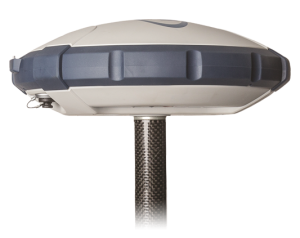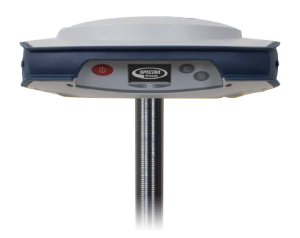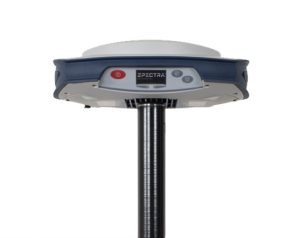Spectra Geospatial is a brand of land survey instruments like GNSS receivers, total stations and lasers.
![]()
Different companies were merged together to one brand called Spectra and in the end acquired by Trimble.
Many companies merging to be Spectra
One of the companies that is part of the brand Spectra is Carl Zeiss AG. It was established by Carl Zeiss in Jena, Germany. The company was one of the first that focused on optics and precision lenses. In 1999 Spectra Precision and Carl Zeiss AG managed to create a joint venture. Their goal was to manage the Zeiss surveying business better.
The second company is Ashtech. This company saw the light in 1987 in California. After 10 years in 1997 they merged with Magellan Corporation. Magellan was a GPS business focused on the consumer. In 2009 Ashtech became a independent entity again. That only took two years. Because in 2011 Trimble acquired Ashtech. Trimble brought the ccompany under in the Spectra Precision division.
Another company that is part of the brand Spectra is Nikon. In 1917 the Nikon Corporration was formed. This was a result of a merger between three optical manufacturers. They were all Japanese. Nowadays Nikon is still a famous name in optics. Everyone knows the Nikon camera’s. But still they have their presence in the land surveying market. Nikon and Trimble made joint-venture in 2003. One of the results from this joint venture is that only the Spectra Precision Division of Trimble can sell Nikon-branded optical instruments.
Also there was the company Tripod Data Systems. The abbreviation is TDS. In 1987 the company was established. It became a leading land survey software company in the United States and Canada. Trimble buys this company in 2000 and their software gets sold now through the Spectra Precision Division.
Spectra and Trimble
As you can read Spectra and Trimble have a close relationship. Spectra started as a manufacturer of lasers. They are a specialist in this area. In the 1990’s they took over three companies. One was Geotronics from Sweden. The other two were Plus 3 from Atlanta Georgia in the USA and Terrasat in Germany. In 2000 Trimble acquired Spectra Prescision, with their optical surveying and laser business. That area joins very well the speciality of Trimble, which is the GNSS market. Nowadays Spectra is one of the brands of Trimble.
Lasers as speciality
Building and developing lasers is a speciality of Spectra. Already in 1965 a team at Laserplane / Spectra Physics in Dayton, Ohio, USA developed the first commercial laser. It was a break through in land surveying. After that the first rotating laser was introduced in 1968. The following laser types followed:
- laser control of construction and drainage machinery – 1969
- electronically leveled pipe laser – 1974
- rotating laser that could be electronically leveled – 1975
- electronic level – 1981
- cone technology laser – 1988
- proportional machine control laser receiver – 1998
Lots of this happened because of the effort of Spectra.
Also GNSS receivers
Nowadays Spectra also develops GNSS receivers.
Spectra SP60
One of the GNSS receivers is the SP60. It is a nice good looking GNSS receiver. It is round and flat, which also makes it easy to mount and to use.

- Dimensions: 210x210x70 mm
- Weight: 930 gram
- Ingress protection: IP67
- Corrections: NTRIP, ATOM, CMR, CMR+, RTCM2, RTCM3, MSM, CMRx and sCMRx
- Position output: NMEA
- Positioning kinematic horizontal: 8 mm + 1 ppm
- Positioning kinematic vertical: 15 mm + 1 ppm
- GNSS signals tracked: GPS/QZSS L1, L2, GLONASS L1, L2, BeiDou B1, B2, Galileo E1, E5b
- Number of channels: 240
Buy the Spectra SP60 here for the best price.
Spectra SP80
Another one of its GNSS receivers is the SP80. It has a different shape. It is more a rectangle than a circle. That is because on both sides of the receiver an antenna can be placed.

Besides that the SP80 looks different. It also has some other specifications.
- Dimensions: 222x194x75 mm
- Weight: 1170 gram
- Ingress protection: IP67
- Corrections: NTRIP, ATOM, CMR, CMR+, RTCM2, RTCM3, MSM, CMRx and sCMRx
- Position output: NMEA
- Positioning kinematic horizontal: 8 mm + 1 ppm
- Positioning kinematic vertical: 15 mm + 1 ppm
- GNSS signals tracked: GPS/QZSS L1, L2, L5, GLONASS L1, L2, L3, BeiDou B1, B2, Galileo E1, E5a, E5b
- Number of channels: 240
Spectra SP85
Also there is the SP85. It looks a lot like the SP80.

Only in the specifications you can see the difference.
- Dimensions: 222x194x75 mm
- Weight: 1170 gram
- Ingress protection: IP67
- Corrections: NTRIP, ATOM, CMR, CMR+, RTCM2, RTCM3, MSM, CMRx and sCMRx
- Position output: NMEA
- Positioning kinematic horizontal: 8 mm + 0.5 ppm
- Positioning kinematic vertical: 15 mm + 1 ppm
- GNSS signals tracked: GPS/QZSS L1, L2, L5, GLONASS L1, L2, L3, BeiDou B1, B2, Galileo E1, E5a, E5b
- Number of channels: 600
As you can see the biggest difference is the number of channels.
Buy the this GNSS receiver for the best price here.
GNSS survey software
Because of the size of the brand and knowing that Trimble is behind you expect that Spectra has their own GNSS survey software. They do have. And most of it is based on the software of Tripod Data Systems that Trimble acquired before. Their main surveying software is Survey Pro. There is also Survey Basic and Fast Survey.
In 2019 Apglos and Spectra made a mutual partnership. After that moment there is a great alternative for the software that is mentioned above. It is Apglos Survey Wizard. Read more about this software here.
So if you get a Spectra GNSS set there are lots of options.
Their name
The different addings on the name Spectra can be confusing. As you could read there is Spectra Geospatial and Spectra Precision. This are two different divisions within Trimble.
Geospatial focuses on GNSS receivers and total stations including software. The division precision focuses on lasers. This is very obvious on their two different websites:
So every division has their own specialism.